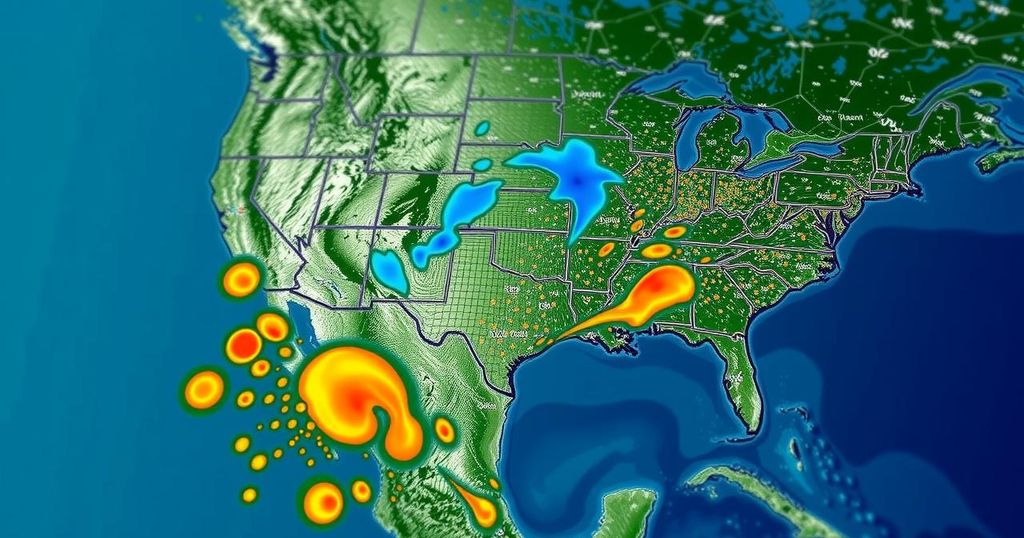Nepal suffered catastrophic flooding in September, resulting in at least 244 fatalities and extensive damages estimated at $95 million. Climate change is driving increased rainfall intensity, with scientists attributing a 10% rise in flood severity to global warming. Rapid urbanization and deforestation exacerbate these risks. Effective risk management and renewable energy adoption are crucial steps toward mitigating future flood impacts.
In September, Nepal experienced catastrophic flooding, marking its worst such event in decades. The floods, triggered by torrential monsoon rains in Kathmandu, resulted in the loss of at least 244 lives and incurred damages estimated at around 13 billion Nepalese rupees (approximately $95 million). This disaster has been attributed to the escalating impact of climate change, which is intensifying extreme weather conditions. Researchers from the World Weather Attribution project highlighted that climate models suggest a 10% increase in rainfall intensity due to human-induced warming, underscoring the significant influence of global temperature rise on weather patterns. The World Weather Attribution team, composed of international experts, analyzed this flooding event, finding a 70% increase in the likelihood of such occurrences due to climate change. Roshan Jha, a researcher affiliated with the Indian Institute of Technology, remarked, “Climate change is no longer a distant threat. With every fraction of a degree of warming, the atmosphere can potentially hold more moisture, leading to much heavier downpours and catastrophic floods like these.” This incident in Nepal exemplifies broader global trends, wherein climate change is exacerbating flooding risks worldwide. A study by Climate Central indicates that climate variability is responsible for 37% of inland flood damage in the United States since 1988, primarily through intensified rainfall and altered hydrological cycles. Researchers from various nations, including India, Sweden, and the United States, contribute to the WWA’s understanding of these issues. Further complicating the situation, rapid urbanization and deforestation in the Kathmandu Valley have worsened flooding by disrupting natural water drainage processes. To address these challenges, the World Weather Attribution report proposed several mitigation strategies, including comprehensive spatial planning, effective disaster risk management, and enhancing public awareness of flooding risks. Transitioning to renewable energy sources is equally crucial in combating climate change and its extreme weather consequences. Ultimately, the floods in Nepal serve as a poignant reminder of the destructive potential of climate change and the urgent need for robust action. As global temperatures rise, the frequency and intensity of extreme weather events are projected to increase, underscoring the necessity for immediate adaptation efforts and preventive measures against future disasters.
The impacts of climate change are increasingly evident worldwide, as exemplified by the recent devastating flooding in Nepal. This particular event was not simply a local disaster but indicative of a broader climate trend that has been intensifying extreme weather patterns. The role of anthropogenic climate change in such events is a concern for researchers and policymakers alike, particularly as extreme precipitation becomes more frequent and severe. With an increasing population density in urban areas like Kathmandu, the risks associated with flooding are compounded by environmental degradation and inadequate infrastructure to cope with heavy downpours, making it critical to invest in solutions that address both climate change and urban planning.
In conclusion, the severe flooding in Nepal highlights the pervasive effects of climate change on weather patterns worldwide. The evidence presented by the World Weather Attribution team indicates that human-induced warming significantly increases the intensity and likelihood of such catastrophic events. Implementing effective flood mitigation strategies and transitioning to renewable energy sources is vital in addressing the immediate threats posed by climate change and protecting vulnerable communities from future disasters.
Original Source: www.thecooldown.com






